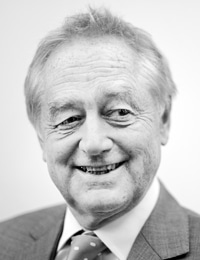London firm Hodge Jones & Allen (HJA) has teamed up with a leading academic to pioneer a predictive model of case outcomes that will enable the firm to better assess the viability of its personal injury caseload.
With most law firms yet to get to grips with the possibilities of big data, HJA said it wanted the ability to make more informed decisions at the initial assessment stage of the 1,200-plus PI cases it handles each year.
The firm provided Andrew Chesher, professor of economics and economic measurement at University College London, with information about the outcomes of 600 cases concluded over a year. He used a combination of statistical techniques to examine the factors contributing to which cases were won or lost, the damages that were received by claimants in successful cases, and the costs received by HJA.
Factors examined included the demographics of the claimant, the nature and cause of the injury, the type of defendant, the quality of the defendant’s solicitors, the level of solicitor handling the case, the number and type of witnesses, the corroborating evidence available, the reporting of cases to authorities and hospitals, and the time between injury and instruction.
The results of the analysis were used to produce robust models able to predict the likelihood of cases being won or lost. These models are now being turned into simple Excel-based programmes that the HJA enquiry team will use to help make initial assessments of the likelihood of a positive outcome for the client and the practice for each case.
Professor Chesher said: “There are complex interactions between many of the variables we analysed and, as with many markets where human judgement is involved, there is always an element of unpredictability. However, particularly with the model predicting the likelihood of a case being won or lost, we were able to produce robust models that will improve over time as further data is collected.”
The win-loss modelling showed the importance of the age and working status of the claimant in predicting outcomes, as well as some subtle gender bias. Another key factor was the length of time between injury and instruction, while there was a “complex interaction” between the circumstances of the accident, type of accident and type of defendant.
The damages model showed how the upper level of the Judicial College Guidelines on damages for different types of injury is almost irrelevant in most cases. It also highlighted that although witnesses and reliable evidence were not particularly instrumental in predicting a win or loss, they were important in achieving higher damages.
HJA senior partner Patrick Allen said: “These models will not replace [our enquiry handling team’s] experience and judgement, but will provide an additional aid to them in a world where it is no longer good enough to take a case on with a 50% chance of success and where fees are restricted to a few hundred pounds.
“Our plan is to continue to refine these models and to test their predictions against real-world outcomes. We have identified key pieces of additional information that we need to collect when an enquiry comes in, and are confident these models provide us with a continuing professional and commercial advantage.”
The firm is currently looking at other areas of the business undertaking high-volume work that might benefit from predictive modelling of this kind.
This work is one of the initiatives coming out of HJA’s continuous innovation programme, which it outlined last month.















Leave a Comment